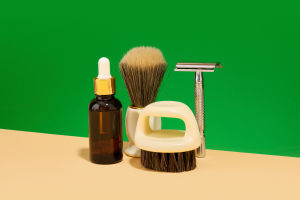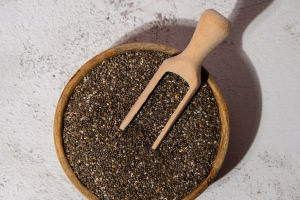Hey Lykkers! Our daily dental care routine often involves one essential item: toothpaste. But with so many types of toothpaste available in stores, how do we choose the right one?
And what should we keep in mind when picking a toothpaste that's best for our health? Don't worry! We've got you covered with this complete guide to help you make an informed decision.
New Toothpaste Regulations: What You Need to Know
Recently, the State Administration for Market Regulation introduced the “Toothpaste Supervision and Management Measures,” which will be implemented starting December 1, 2023. These new regulations aim to ensure that toothpaste is safe and effective for consumer use. The new rules state that new ingredients in toothpaste must be registered with the National Medical Products Administration before use, and claims about toothpaste effectiveness must be scientifically backed.
This regulation is a step forward in making sure the toothpaste we use is safe, and it affects how manufacturers must present their products on the market. So, before picking out your next tube, keep these updates in mind!
What's in Your Toothpaste? The Key Ingredients
Before we dive into choosing the best toothpaste, let's take a closer look at what goes into it. Toothpaste is generally a semi-solid formula used for brushing our teeth. Its main ingredient is an abrasive, which helps clean and remove stains from our teeth. Common abrasives include calcium hydrogen phosphate, calcite powder, aluminum hydroxide, and anhydrous calcium hydrogen phosphate.
These abrasives work by physically scrubbing the surface of our teeth when we brush, removing plaque, food particles, and stains. With the advances in toothpaste technology, some brands also add other ingredients to address specific needs like stain-removing, sensitivity, or gum health. But remember, no toothpaste can treat dental diseases—its primary purpose is to help us clean and maintain dental hygiene.
How to Choose the Right Toothpaste for Your Needs
Now, let's break down how to pick the right toothpaste for our individual needs. Here are some guidelines to help us decide:
1. Fluoride Toothpaste: The Essential for Dental Health
For most people, fluoride toothpaste is a must. Fluoride helps strengthen tooth enamel and prevents tooth decay by inhibiting the growth of harmful bacteria in our mouth. It's especially effective in preventing cavities and controlling gum disease. When in doubt, reach for a fluoride toothpaste!
2. Toothpaste for Sensitive Teeth
If you have sensitive teeth, look for a desensitizing toothpaste. This type of toothpaste helps reduce discomfort caused by temperature changes (cold or hot), sweet foods, or even brushing too hard. It can provide relief for those who experience pain or sensitivity in their teeth.
3. Brightening Toothpaste: Keep Your Smile Bright
Brightening toothpastes contain mild abrasives or chemicals that help break down stains on your teeth. If you're looking to brighten your smile, this type of toothpaste is a good option. However, it's important to note that while brightening toothpaste can help with surface stains, it won't change the natural color of your teeth or address deep stains caused by more serious factors.
4. Special Toothpaste for Children
When it comes to kids, choose a toothpaste specifically formulated for their needs. Children's toothpaste typically has lower fluoride concentrations to ensure they don't swallow too much. Depending on their age, the fluoride concentration should differ, so make sure to choose accordingly:
• Ages 2-5: Use toothpaste with 0.05% fluoride
• Ages 6-11: Use toothpaste with 0.1% fluoride
• Over age 12: A 0.15% fluoride toothpaste is suitable
It's also a good idea to pick a toothpaste that's flavor-free to prevent kids from swallowing it due to the taste.
5. Toothpaste for Pregnant Women
Pregnant women should opt for toothpaste with salt or choose fluoride-free options if concerned about fluoride intake. Always consult with a doctor if you have any specific health concerns.
How to Pick a Cost-Effective Toothpaste?
When shopping for toothpaste, look for those that contain fluoride and check the fluoride concentration. Toothpaste with at least 0.1% fluoride is usually recommended. It's important to note that toothpaste doesn't have to be expensive to be effective—many affordable brands meet all the necessary health standards.
Mistakes to Avoid When Using Toothpaste
Even with the right toothpaste, we might fall into some common misconceptions. Let's clear up a few toothpaste myths:
Myth 1: The More Expensive, the Better
Price doesn't always indicate quality when it comes to toothpaste. Most regular, tested toothpaste brands are effective enough to maintain dental health. The additional benefits of brightening or desensitizing are helpful but not crucial for everyone.
Myth 2: Toothpaste Can Promote Tooth Growth
Unfortunately, toothpaste won't make your baby teeth grow faster or regenerate permanent teeth if they fall out. Toothpaste is for cleaning—not for influencing tooth growth.
Myth 3: Toothpaste Can Fix Cavities
While fluoride toothpaste strengthens enamel and prevents decay, it can't fix cavities that already exist. Once a cavity forms, it needs professional dental care.
Myth 4: Wetting Toothpaste Makes It Work Better
Whether or not you wet your toothbrush before applying toothpaste doesn't affect its effectiveness. However, if you use desensitizing or brightening toothpaste, it's best not to add water before brushing, as it could dilute the active ingredients.
Myth 5: Toothpaste Helps Heal Burns
Using toothpaste to treat burns is a big no-no! While toothpaste might soothe the skin initially, it traps heat and makes the injury worse. Always seek proper treatment for burns instead.
With so many toothpaste options on the market, it can be overwhelming to choose the right one. However, by understanding your needs and selecting the appropriate product, you can make the best decision for your dental health. Fluoride toothpaste is typically the best choice for most, but for those with specific concerns, there are plenty of options like stain-removing, desensitizing, and children's formulas.
Remember, Lykkers, a healthy smile is important, so don't forget to brush regularly with the right toothpaste! If you have any other tips or questions, feel free to share them in the comments. Stay smiling!


